Siberian cats are known for their beautiful long coats which they evolved to survive the harsh winters of their native land, Siberia. They’re a natural breed, meaning that they came into existence without the help of breeders and have been around for thousands of years.
In this long time, the Siberian cat’s coat has evolved to have many colors and patterns. From black to white, and tabby to color point, the Siberian has colors and patterns for any preference.
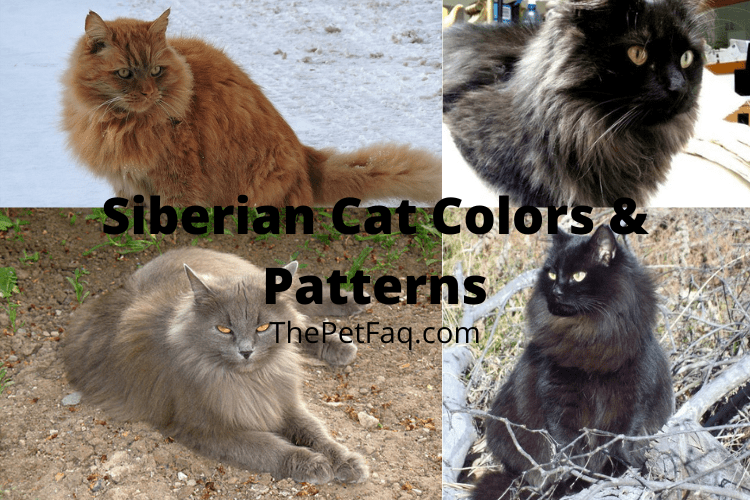
Today, we’re going to take a closer look at all the colors and patterns that the Siberian Cat can have. That way, you’ll be as informed as possible when deciding which one is your favorite. Of course, every color and pattern will have a picture accompanying it. As they say, a picture says more than a thousand words!
With that being said, let’s get into the 50+ stunning Siberian Cat colors and patterns!
Solid Siberian Cat Colors
Let’s first start by taking a look at the solid colors that the Siberian cat can have. Solid basically means that their coat is one, uniform color without the presence of any other color or markings.
White Siberian Cat
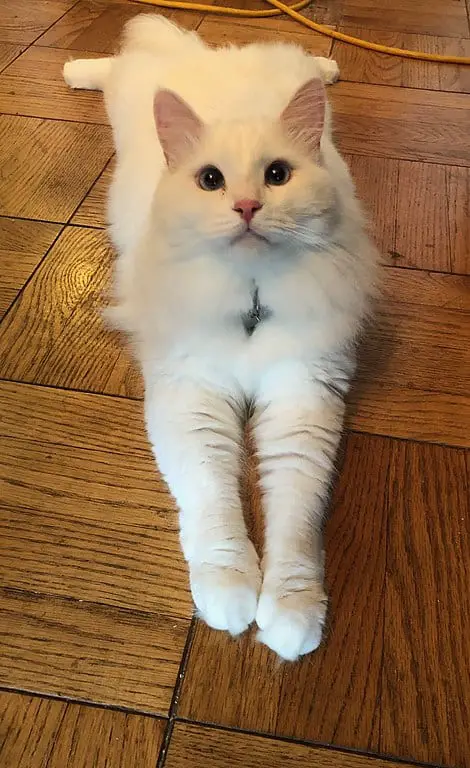
The white Siberian cat is characterized by its mesmerizing white coat. Their pristine coat is free from any other colors or blemishes and really stands out. It’s one of the most desired coat colors in these felines and because of that they often fetch quite a high price.
White Siberian cats come in three different variants: Blue-eyed, copper-eyed, or odd-eyed. The first two kinds are quite self-explanatory. The last variant means that they have heterochromia. Meaning one of each eye color.
Black Siberian Cat
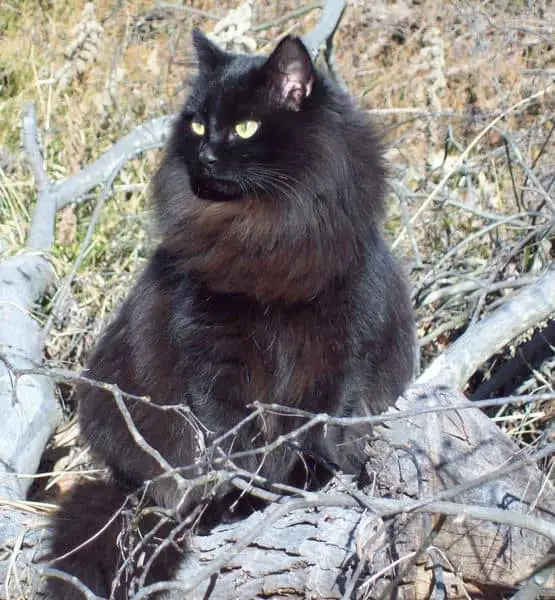
The Black Siberian cat has a jet-black coat accompanied with black nose leather and paw pads. These cats’ black coats give them a mysterious, eye-catching appearance which makes them highly desired. Also interesting to note is that the genes that give these cats their black coat might make them more resistant to certain diseases.
Blue Siberian Cat
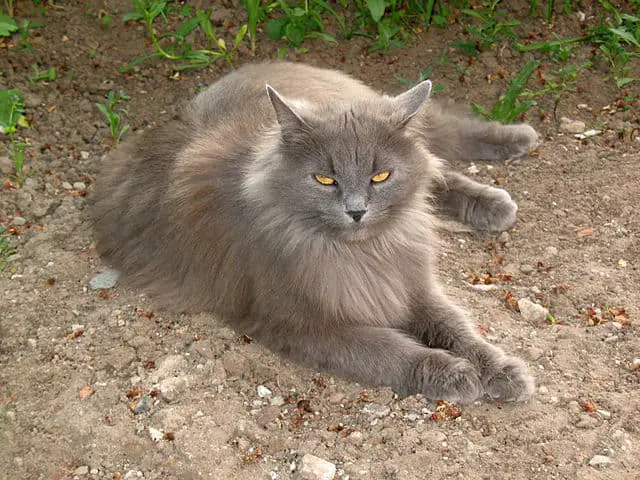
The Blue Siberian cat is often mistakenly called “grey”. It’s an easy mistake to make because, honestly, their coats do often look more grey than blue. Nevertheless, the official name for their color is blue. The reason why they’re called blue and not grey is that their coats have a distinct blue hue if you look closely.
Red Siberian Cat
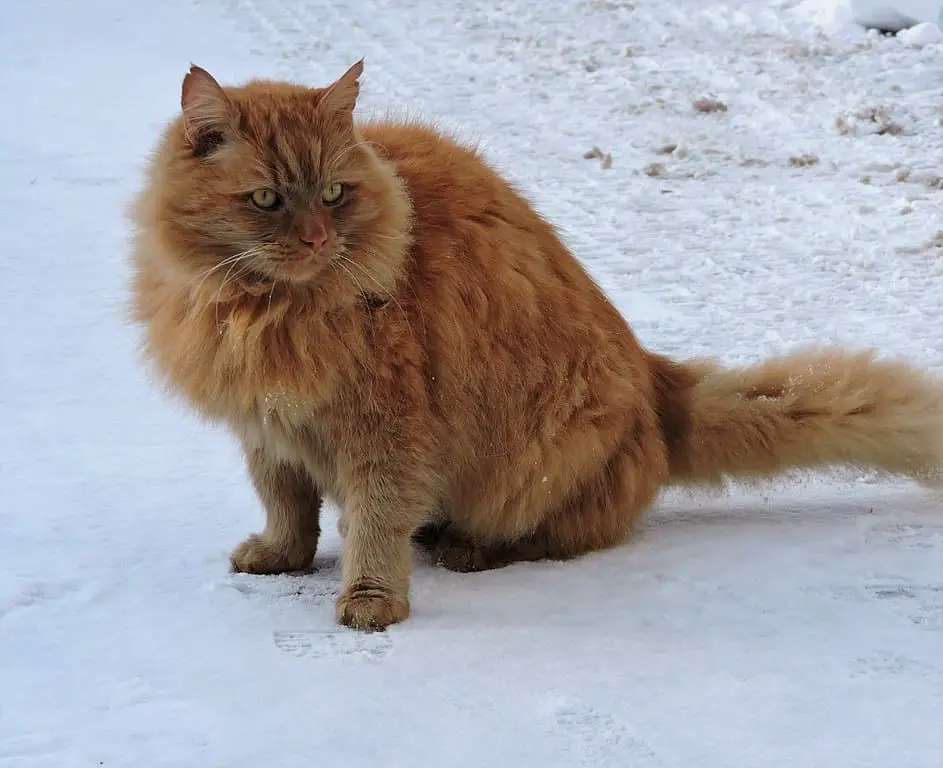
The Red Siberian cat is characterized by its marvelous red coat. These cats are also often called Orange Siberian Cats because many people believe their coats to be more orange than red. The official name is red, however.
Cream Siberian Cat
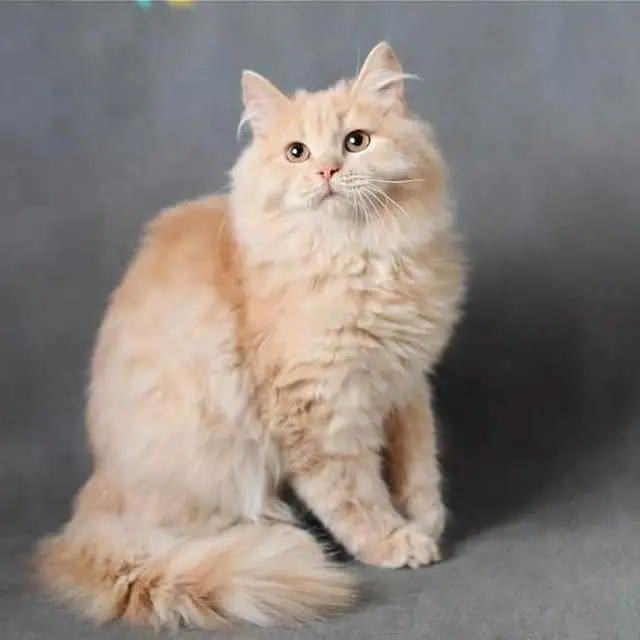
The Cream Siberian cat has a light, cream-colored coat. An interesting thing to note about the cream color is that it’s actually a diluted version of the red color. This is caused by the cat having two recessive d alleles.
Tortoiseshell Siberian Cat
The Tortoiseshell Siberian cat has a black coat with patches of red. These red patches can be several shades of red. A variant called Tortoiseshell and White also exists. This is a white cat, with black and red patches in the tortoiseshell pattern.
An interesting fact about tortoiseshell cats is that they’re almost always female.
Calico Siberian Cat
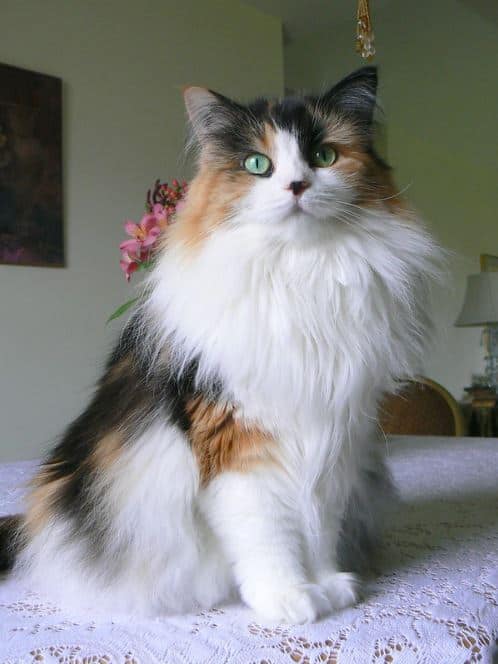
The Calico Siberian Cat is white with patches of black and red. In order for a cat to be classified as calico, its feet, legs, underside, and muzzle should be completely white.
There’s also the Dilute Calico color pattern. Dilute Calico Siberians are almost identical to calicos, except for the fact that the color is diluted. This means that instead of red and black, the patches are blue and cream
Furthermore, there’s also the Van Calico pattern. It’s very similar to the regular calico pattern except that the patches of black and red are only present on the extremities (head, tail, and legs).
This pattern also exists in a dilute version, called Van Dilute Calico, wherein the patches are cream and blue rather than black and red.
Like the Tortoiseshell, Calico Siberians are almost always female.
Tabby Patterns
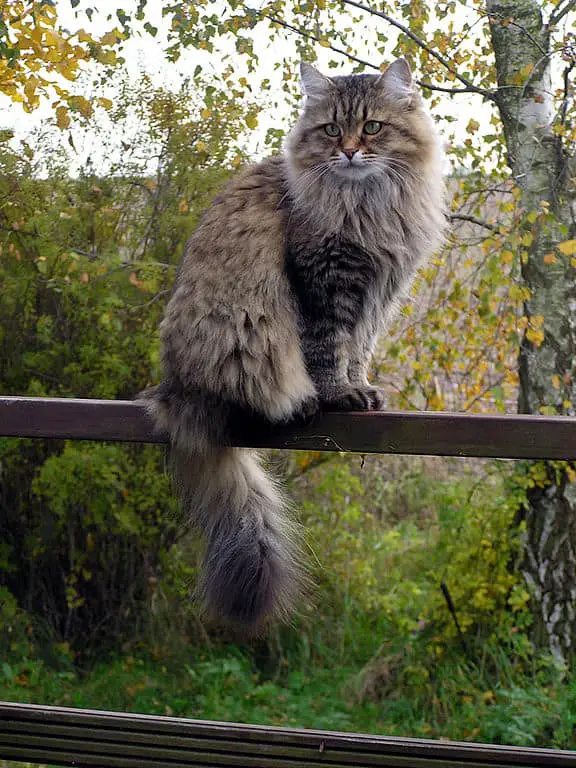
There are a total of 5 distinct tabby patterns that cats can have. However, Siberians can only have 4 of them: The Classic Tabby Pattern, the Mackerel Tabby Pattern, the Patched Tabby Pattern, and the Ticked Tabby
Mackerel Tabby Siberians have thin stripes on the sides of their body. Also, they have stripes running perpendicular to their spine. This is by far the most common tabby pattern.
Siberians with a Classic Tabby Pattern have dense, clearly defined, broad markings. Also, they have swirling, bold patterns along the side of their body with a distinctive mark resembling a bullseye on their side. They also have a butterfly pattern on the shoulder and 3 stripes along the spine.
Patched Tabby Siberian cats are also called torbie. They are silver, blue, brown, or blue-silver tabbies with patches of red or cream (diluted red).
Ticked Tabby Siberians do not have spots or stripes on their body. This makes them look very different from other tabbies. They do have tabby markings on their face and they also have agouti hairs on the body. Agouti hairs are hairs that are striped with light and dark bands.
These tabby patterns can come in many different colors, giving even more variety to the many different appearances that Siberian cats can have! Some of the colors that the different tabby patterns can have include:
- Brown Patched
- Blue Patched
- Silver Patched
- Silver
- Blue-Silver
- Blue-Silver Patched
- Red
- Brown
- Blue
- Cream
- Cream-Silver
- Cameo
- Golden
- Blue-Golden
In addition, tabby and white Siberians also exist. These cats are white with colored portions that adhere to the above tabby colors.
Smoke Siberian Cats
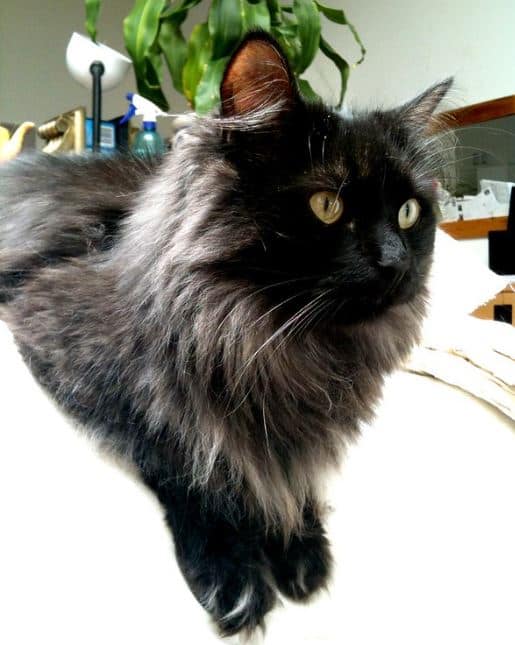
The Smoke pattern is very interesting. You can recognize a smoke pattern by taking a look at the undercoat. The undercoat of cats that have a smoke pattern is white while the tips of the hairs are different colors. This combination leads to a very unique result wherein the Siberian sometimes looks to be a solid color when standing still but where the white undercoat clearly becomes visible when they’re moving.
While the undercoat is always white in the smoke pattern, the tips of the hairs can be any of the solid colors mentioned above, except white of course, since the undercoat is already white and that would just make it a white Siberian instead.
In addition to those colors, there’s also a Smoke Tortoiseshell. The Smoke Tortoiseshell has a white undercoat like the rest but has black, red, and cream-tipped patches.
Shaded and Chinchilla
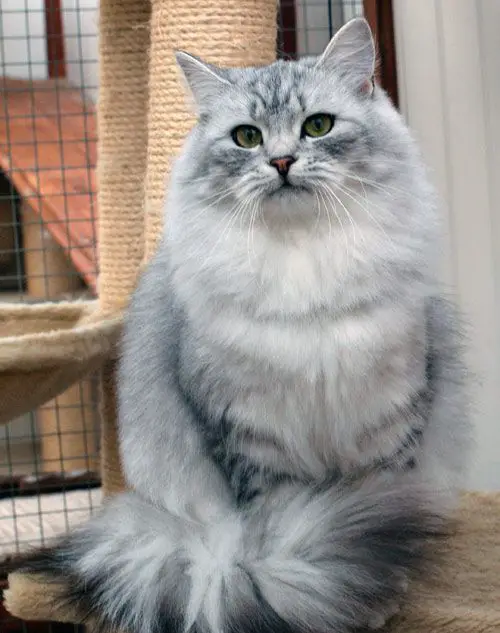
The Chinchilla color pattern is characterized by an undercoat that is one color, while the coat on the back, head, flank, and tail is tipped with different colored hairs. Siberian cats can have 3 distinct Chinchilla colors:
- Chinchilla Silver. White undercoat with black tipping on the back, flanks, tail, and head, giving the Siberian a sparkling silver appearance.
- Chinchilla Golden. Honey or Apricot colored undercoat with black tipping on the back, tail, flanks, and head, resulting in a golden appearance.
- Chinchilla Red (Also known as Shell Cameo). White undercoat with red tipping on the back, tails, flanks, and head.
In addition, there’s also the shaded pattern. For most people, the shaded and Chinchilla Siberian look almost identical. The main difference between the two is that the shaded pattern has much more tipping. Shaded Siberians have ⅓ of the length of the hair tipped with color, while Chinchilla Siberians only have about ⅛ of the length of the hair tipped with color.
Shaded Siberians can have the same colors as the Chinchilla pattern: Shaded Cameo (Red Shaded), Shaded Golden, and Shaded Silver.
Siberian kittens with this color pattern are quite rare, so be prepared to search for a while to find one for sale.
Bi-color Siberian Cats
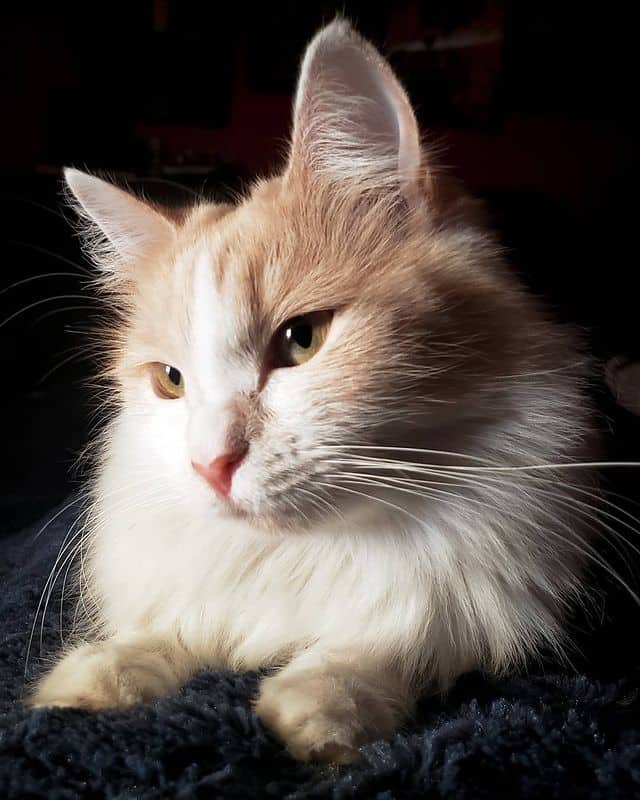
As the name suggests, Bi-colors have two different colors. There are many different bi-color combinations that Siberians can have, such as:
- Solid color and white
- Tabby and White
- Smoke and white
- Shaded and white
- Colorpoint and white
In addition, a Van bi-color variant also exists. The difference between regular Bi-Color and Van Bi-Color is that the Vans only have the colored patches on their extremities (legs, head, and tail.)
Colorpoint Siberian Cat
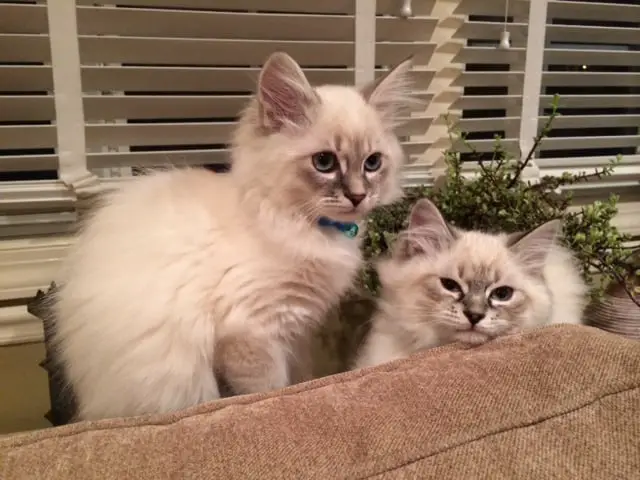
The final pattern that the Siberian cat can have is colorpoint. There are two different types of colorpoint patterns, the point pattern, and the lynx pattern.
Point pattern Siberians have a clear colored body with a clear contrast between the fur of their body and their point color. The points are patches of fur located on their ears, legs, feet, tail, and mask.
There are a total of 6 point colors that Siberians can have:
- Seal point. Fawn/cream body with seal brown points.
- Blue point. Blue/white body, blue points.
- Flame (red) point. Creamy white body, flame-orange/deep red points.
- Cream point. Creamy white body with deeper cream-colored points.
- Tortie Point. Creamy white or fawn colored body with seal brown points with patches of red and cream.
- Blue-cream point. Blueish/creamy white body with points that are blue with patches of cream.
Lynx Point Siberians have a mask that’s clearly defined with dark stripes in the shapes of the classic “M” pattern on the forehead. They have light rings around their eyes and dark spots on their lighter-colored whisker pads. They have a distinctly more tabby-like appearance than color points.
There are 8 total colors that lynx point Siberians can have, the same 6 as mentioned above + Seal Silver Lynx Point and Blue Silver Lynx Point.
Final words
If you’ve made it this far, congratulations, you can now call yourself a true expert on Siberian cat colors! I hope this guide has enlightened you on the diverse range of colors and patterns that Siberian cats can exhibit and that it taught you the difference between them.
With so many patterns and colors to choose from, there’s something for everyone. However, it can also make deciding which color or pattern you like the most quite difficult. They’re all beautiful and unique in their own way.
- How Long Do American Eskimo Dogs Live? Important Factors and Care Tips - September 29, 2023
- Do American Bulldogs Need Grooming? Essential Tips and Care Guidelines - September 29, 2023
- Do Bengal Cats Enjoy Playing? Essential Tips for Keeping Them Active - September 29, 2023